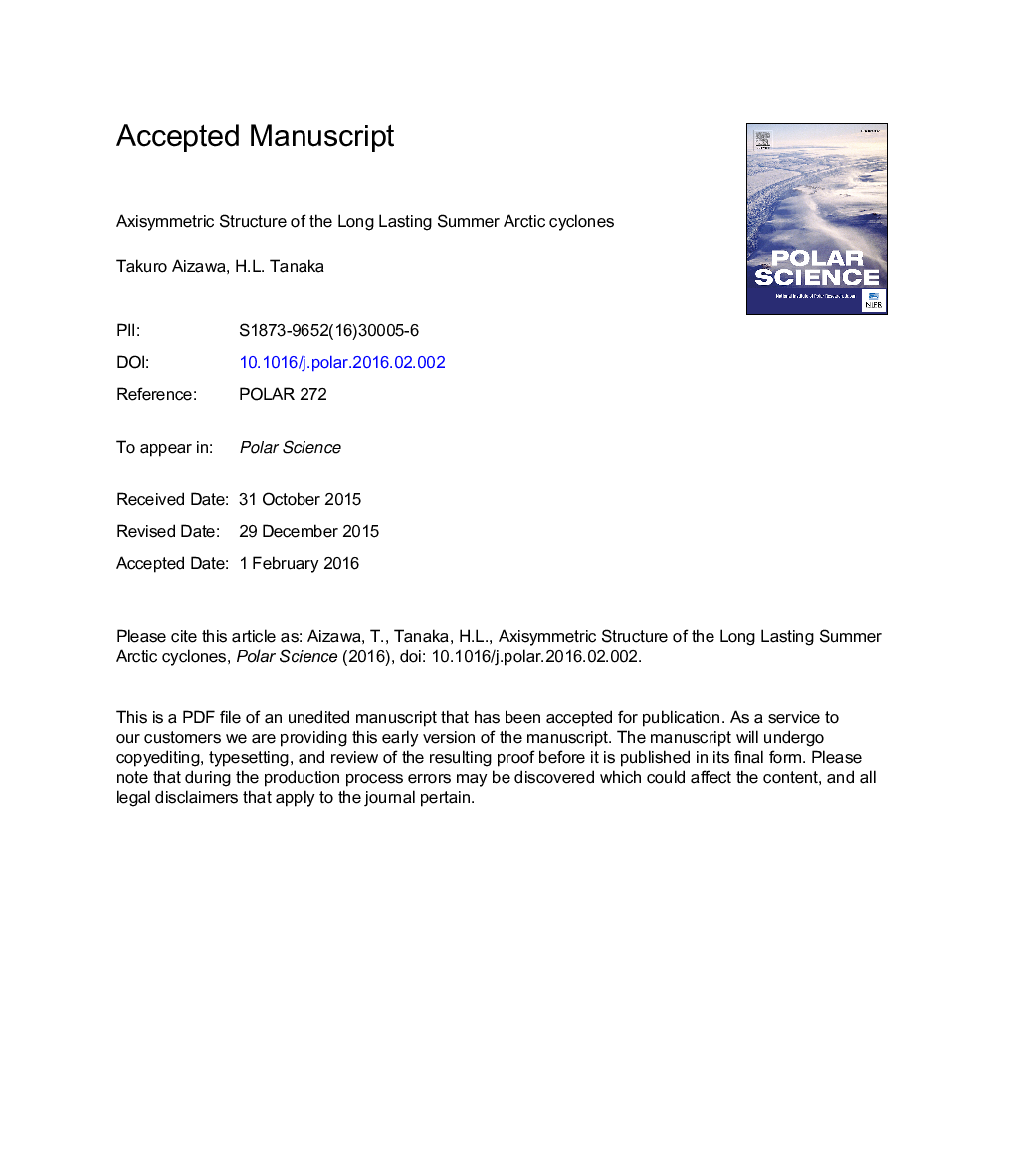| Article ID | Journal | Published Year | Pages | File Type |
|---|---|---|---|---|
| 5780577 | Polar Science | 2016 | 24 Pages |
Abstract
The result demonstrates that the Arctic cyclone has a deep barotropic cyclonic circulation, a secondary circulation in the troposphere, a downdraft at the lower stratosphere, a coupling of a warm core at the lower stratosphere and a cold core in the troposphere, and a deep tropopause folding over the cyclone center. The horizontal scale of the Arctic cyclone reaches 5000Â km in diameter which is one of the largest cyclones found on the Earth. Note that the cyclone of June 2008 appears showing axisymmetric cyclonic circulations at the surface level. The cyclone of 2012 is characterized by the structure change from the cold core to the warm core at the lower stratosphere, indicating a shift from the ordinary baroclinic cyclone to the typical Arctic cyclone. Although additional studies are needed, a schematic diagram of the Arctic cyclone is proposed in this study.
Related Topics
Physical Sciences and Engineering
Earth and Planetary Sciences
Earth and Planetary Sciences (General)
Authors
Takuro Aizawa, H.L. Tanaka,
